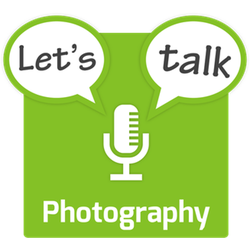Panel
- Bart Busschots (host) – @bbusschots – Flickr
In this solo show Bart does his best to excite you about wide angle photography, and to convince you to give it a go!
While this podcast is free for you to enjoy, it’s not free for Bart to create. Please consider supporting the show by becoming a patron on Patreon.
Reminder – you can submit questions for future Q & A shows at http://lets-talk.ie/photoq
Show Notes
The iPhone 11 brought two big camera changes — one dramatic, one mundane, and while I love both, it’s the mundane one that gives me the most joy the most often!
The dramatic feature was Night Mode. It combines information from many seconds of video into a single, well exposed frame, even in near total darkness. This is one of the highlights of Apple’s move into computational photography, and is a true technological marvel. I use Night mode from time to time, and I absolutely love it. I was also very happy when Apple made it even better on the iPhone 12.
So, what mundane addition did Apple make to the iPhone 11 that gives me more joy than the technological marvel that is Night Mode? The ultra-wide lens!
Sure, it’s got some nice optics, and sure, the folded light path is impressive, but it’s really quite technologically mundane compared to Night Mode, but no one (other than fellow photographers) cares how a photo was taken, what matters is the photo itself! If a photograph catches the eye then it catches the eye, whether it was taken with the most ordinary camera imaginable, or the most extraordinary technological marvel just doesn’t matter!
I’ve taken more eye-catching photos with that ultra-wide lens than with Night Mode.
Most photographs are taken at human eye level with a lens with a zoom level close to neutral. The majority of the rest is taken with a zoom lens. What means that any photograph taken with a wide angle lens already has a teeny tiny edge even if you don’t use it creatively. But if course, you can, and IMO should, get creative!
What prompted this topic was a wide-angle shot I snapped with my iPhone this week on my lunchtime walk, but I’ve loved having fun with wide angle lenses for years — one of my favourite DSLR lenses is a Sigma 10–20mm! While I definitely hope to inspire iPhone users with this episode, it really is for anyone with any kind of camera that shoots wide!
The shot from my lunchtime walk this week:
Great Foreground Choice
What excites me most about wide angle lenses is the range of foreground choices they open up. Because the background is zoomed out, you have to walk a long way to significantly change your background. If you find a nice landscape, that means you have a huge area within which to find an interesting foreground object.
One of my favourite strategies for shooting interesting landscapes is to try find three layers — a nice foreground, mid-ground, and background (often the sky). Shooting wide makes that much easier to achieve.
Get Low
Getting low is very often very rewarding, but I find it pays off double when you shoot wide. Getting down low with a wide angle lens will give you a point of view that’s nothing like what you see walking through the scene. Your shot will immediately be different enough to catch the eye, but it’s not just different, I find it often also much more dramatic. It seems things look more impressive when you’re looking up at them like a child would!
One of the things I’ve struggled to capture for years is the beauty of autumn. It never quite looks as nice in the photo as it did being there. I love using wide angle lenses to tackle this problem — get low so you have individual leaves in the shot, and shoot wide so you can see their context.
(↑ 2nd photo)
Get Close
Something I really like about the iPhone’s ultra-wide angle lens is that it focuses in nice and close. This allows you do do something very powerful — capture something small as well as the environment it exists in with a single shot. The only way I’ve ever succeeded in capturing both a flower and the garden it lives in is by getting right up close to the flower with a wide angle lens.
If you’re thinking of buying a wide angle lens for a DSLR or mirrorless camera, I’d strongly recommend searching for one with as a close a shortest focus distance as you can get. The was one of the factors that attracted me to the Sigma 10–20mm!
Shoot the Night Sky
I’ve always loved star-scapes, be they the grand constellations and asterisms like the Orion, the summer triangle, or the big dipper, or the sweeping arc of the milkyway. If you want to capture these big scenes, or the better still, these big scenes over a landscape of some kind, you simply have to go wide.
If you’re shooting with a camera that has a full manual mode going wide comes with another huge advantage — because you’re effectively zooming out, the rotation of the sky gets slowed down, so you can expose for much longer without the stars becoming potatoes! This means that you don’t need to worry about getting a very bright wide angle lens, even if you want to use it at night.
Don’t Fret About Perspective Distortion
By its very nature, a wide angle lens distorts perspectives. If you angle the camera up or down you’ll start to get very dramatic key-stoning very quickly. This effect is always there, but if your scene doesn’t have obviously rectilinear things you might well not notice the distortion at all, or at the very least, it won’t be a distraction, which is what really matters.
When you have good reason to worry about distortion because your scene contains a building or something similarly square I would suggest choosing from one of three strategies:
Avoid (Shoot Level)
You can avoid strong distortion by shooting face-on to the square thing. If it’s a building, shoot it exactly face-on and keep your camera exactly level and horizontal.
Remove (Fix it in Post)
In the past perspective correction was an advanced feature, but it’s now so common even the iPhone’s built-in camera app does it!
Just remember that fixing the distortion will result in a cropped shot, so frame things more loosely if you plan to fix the distortion in post.
Embrace
Don’t fight the distortion, use it! Rather than trying to avoid it distracting from your shot, use it as a feature of the shot. The distortion can actually help make your shot catch the eye in all the right ways. It really can be a feature rather than a bug 😉
Get Out There and Have Fun!
What ever wide-angle lens you have at your disposal, I hope I’ve inspired you to blow the proverbial dust off it and get snapping!
If you can’t shoot wide at the moment, I hope I’ve convinced you it’s at least worth considering next time you have some lens money saved up 🙂

